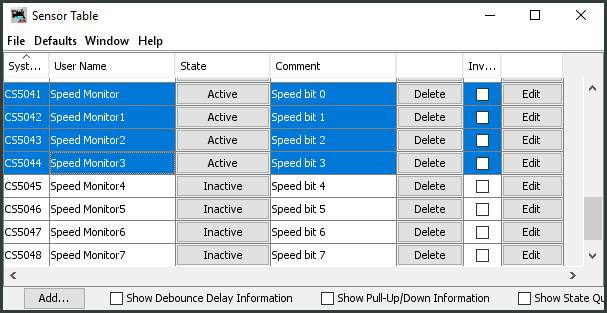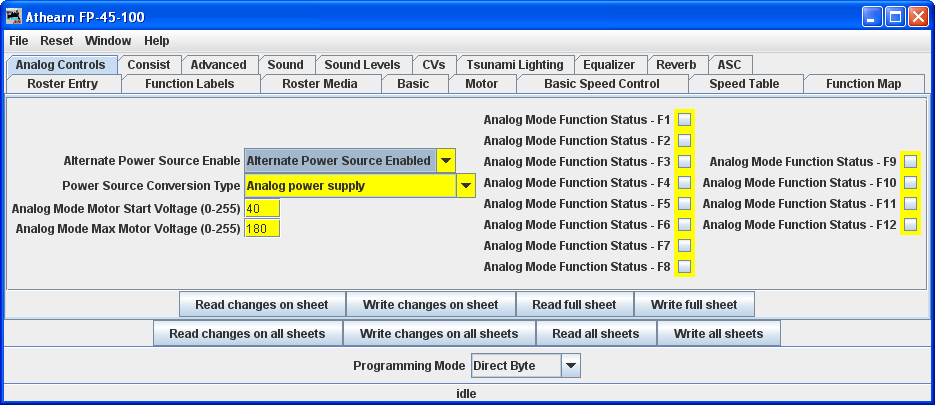

- #Jmri decoderpro motor settings serial
- #Jmri decoderpro motor settings Patch
- #Jmri decoderpro motor settings pro
This is an extremely helpful window that lets you watch the traffic on Loconet (it is a network, after all), and is a great troubleshooting thing to see what’s going on. From the same “DecoderPro” window as above, select “LocoNet”, then “Monitor Loconet”. Now that everything is setup, give it a test.
#Jmri decoderpro motor settings Patch
If you’re not, check this thread on the JMRI user group, because there is, for a short while, a patch that needs to be applied when using the DCS51. Once it’s closed, relaunch JMRI, and you should be connected and ready to go. Hit save, and it will ask you if you want to shut down JMRI to restart it.
#Jmri decoderpro motor settings serial
Serial port: “/dev/cu.usbmodem1d11” or something similar.Create a new connection if one doesn’t exist. Once the small screen is open (that says “DecoderPro” and has the two programming mode buttons), click the “Edit” menu, then select “Preferences”. DecoderPro is the application that lets you program decoders. There are a number of ways to do this once you’ve got JMRI setup, but the I usually do it by opening DecoderPro. It’s going to say something like “new network connection found, usb/cu.something”. Now, using the USB cable, plug the PR3 into the Mac. Please note, you do NOT need to use a power source for the PR3, for our uses it’s self powered. You should now see the status lights on the PR3 blink intermittently. Then, using the Loconet cable, connect the PR3 (either Loconet port is fine) and the Zephyr (again, either port is fine). Use it as it’s suggested, run some stuff, etc… I’d suggest everything’s working fine there before moving on to the next step. This is an easy one, open everything up, the Zephyr, the PR3, and the Mac.įirst setup your Zephyr. Step 1: Open everything up and plug it in. You’ll want to download the latest Production version. Don’t be a stereotypical cheap model railroader here, these guys deserve a little money for all the work they’ve put. It’s Free and Open Source, but you’ll definitely want to kick them a few bucks to support the project (and its past legal issues with a jackass patent troll). It’s written in Java, which means that while ugly, it will work on many different platforms, including Windows Machines and Macs. This is the application that talks to Loconet on your computer. I got mine at a local electronics shop, but they can be had in many places, including. Don’t be fooled, it’s just a six wire (not four wire, this is important) phone cable. This is, essentially, a network cable for Loconet devices. This is what interfaces between your computer and “Loconet”. This is the command station that provides the “Loconet”.
#Jmri decoderpro motor settings pro
Mac Laptop (mine’s a Macbook Pro Running OS 10.6.4) or desktop.Here’s what I started with to make it all happen. Here’s what I did, because I didn’t find any nice, concise, step by step, walkthroughs, and I figured people my appreciate one.

I’ve had a number of decodered locomotives for the significant amount of time I spend “visiting” or on NTRAK layouts, so I was familiar with the basic concepts, but had never got it running at home. I recently, finally, dove into DCC at home by buying a Digitrax Zephyr Xtra and a Digitrax PR3.


 0 kommentar(er)
0 kommentar(er)
